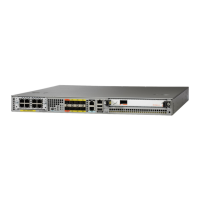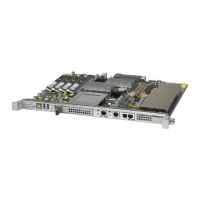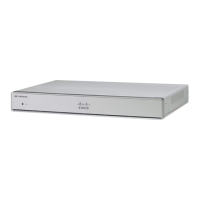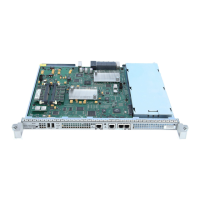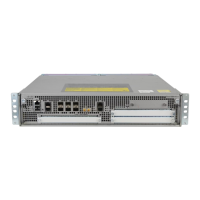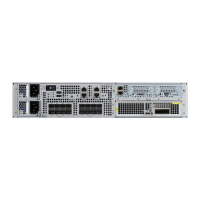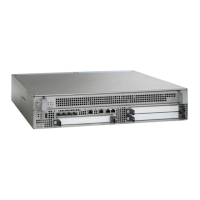21-27
Cisco 10000 Series Router Software Configuration Guide
OL-2226-23
Chapter 21 Configuring L2VPN Interworking
ATM to Frame Relay—Routed Interworking
encapsulation mpls
interworking ethernet
frame-relay switching
interface serial 2/0/0:1
encapsulation frame-relay
frame-relay intf-type dce
connect mpls serial 2/0/0:1 567 l2transport
xconnect 10.0.0.200 150 pw-class fr-vlan
The following example shows how to configure the FR DLCI to Ethernet VLAN 802.1Q feature on a
PE2 router using bridged interworking:
config t
mpls label protocol ldp
interface Loopback200
ip address 10.0.0.200 255.255.255.255
pseudowire-class fr-vlan
encapsulation mpls
interworking ethernet
interface gigabitethernet 5/1/0.3
encapsulation dot1q 1525
xconnect 10.0.0.100 150 pw-class fr-vlan
Note To verify the L2VPN interworking status and check the statistics, refer to the “Verifying L2VPN
Interworking” section on page 21-30.
ATM to Frame Relay—Routed Interworking
To perform routed interworking, the ATM and FR PE router must be configured. Routing protocols must
also be configured to operate in the P2P mode. ATM packets arriving from the ATM CE router are
translated into IP encapsulation over the pseudowire.
When packets arrive from the FR CE router, the FR PE router removes the L2 framing, and forwards the
IP packet to the egress PE router, using IPoMPLS encapsulation over the pseudowire. The FR PE router
makes the forwarding decision based on the L2 circuit ID (DLCI number) of the incoming L2 frame. The
FR CE router can use static map of IP address to DLCI number.
At the ATM PE router, after label disposition, the IP packets are encapsulated over the AAL5, using
routed encapsulation.
Address resolution is done at the ATM PE router, if the ATM CE router is doing inverse ARP. It is not
required if the ATM CE router is configured using P2P subinterfaces or static maps.
Packets arriving from either ATM CE or FR CE routers with unsupported translations are dropped.
Figure 21-17 demonstrates ATM to FR routed interworking.

